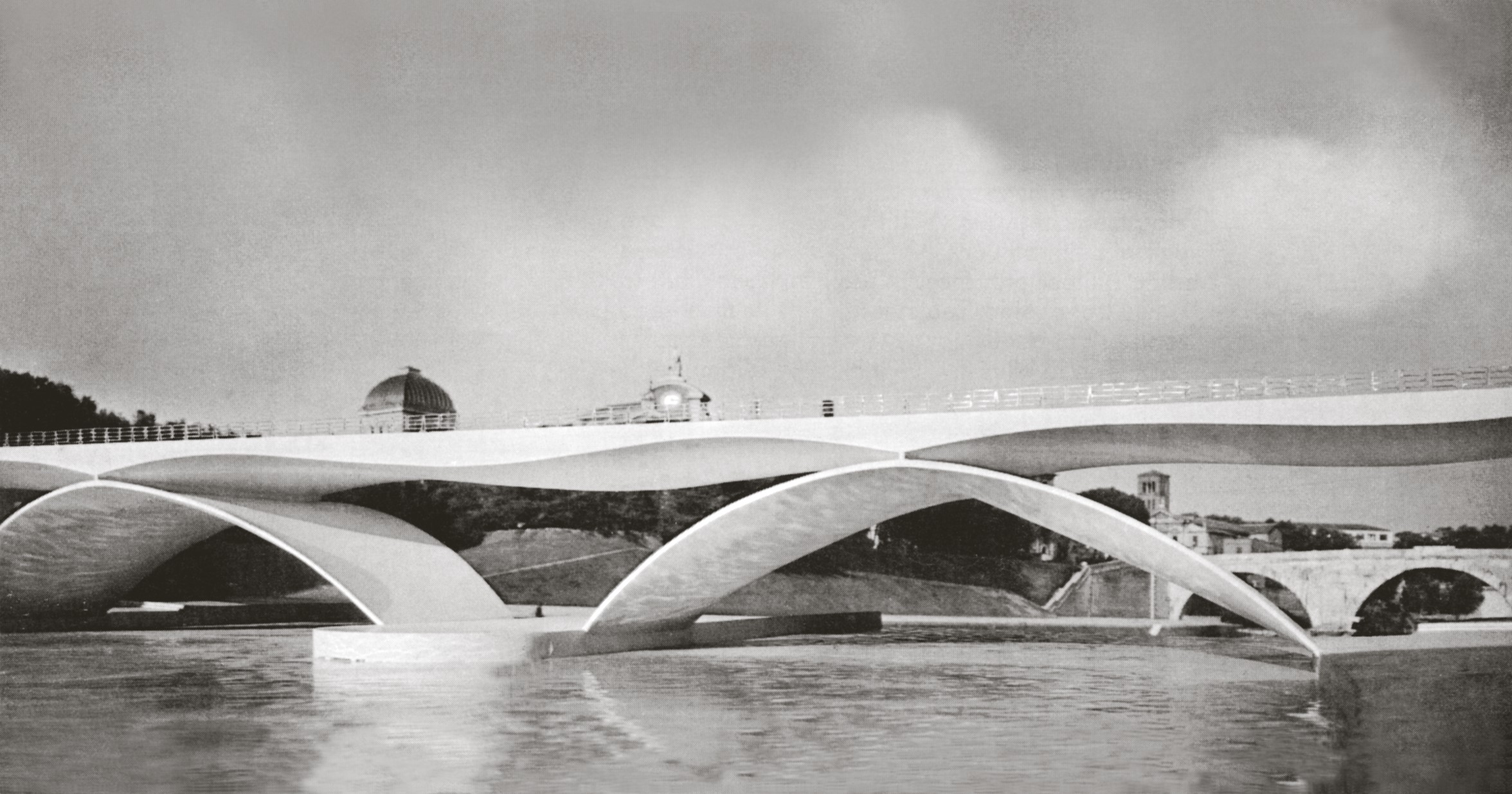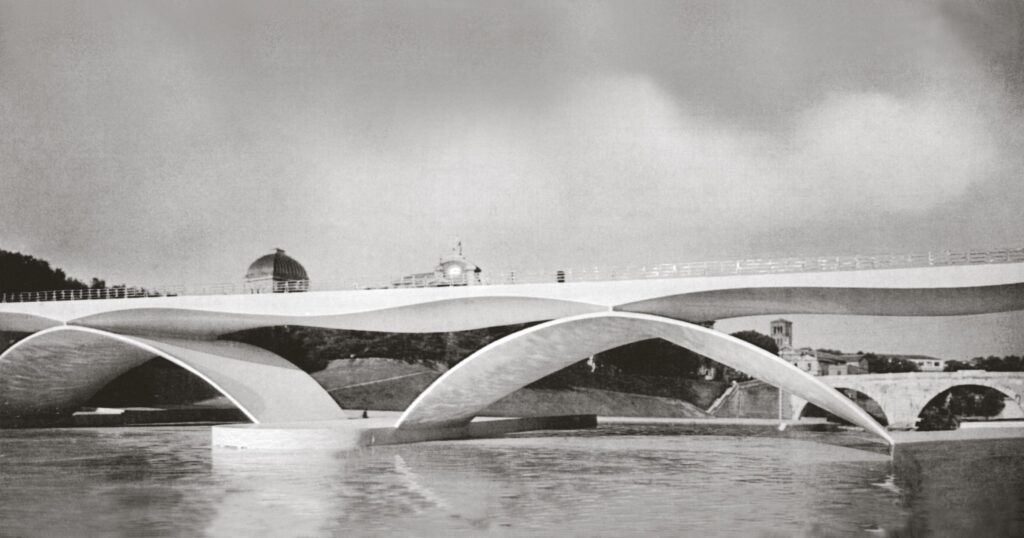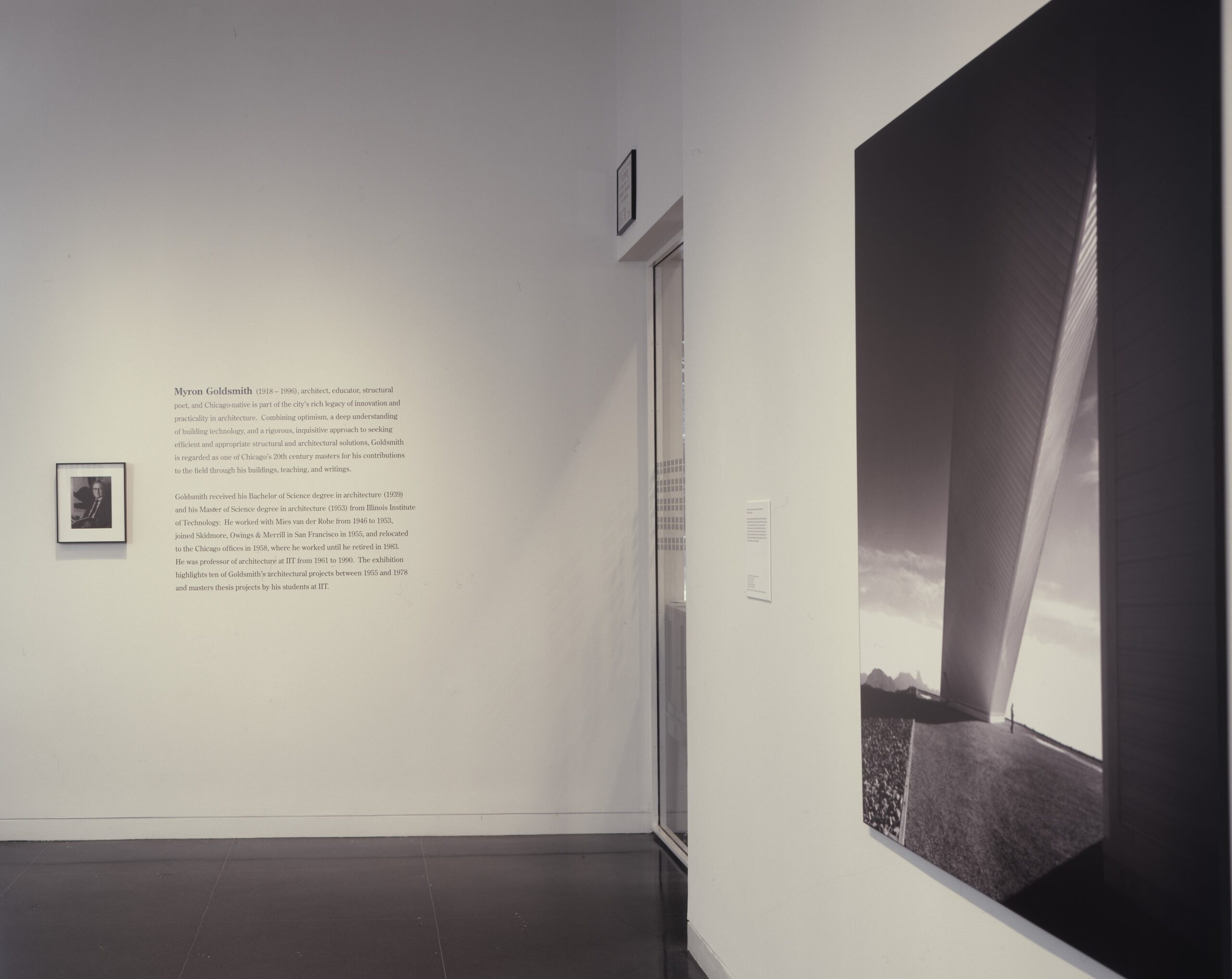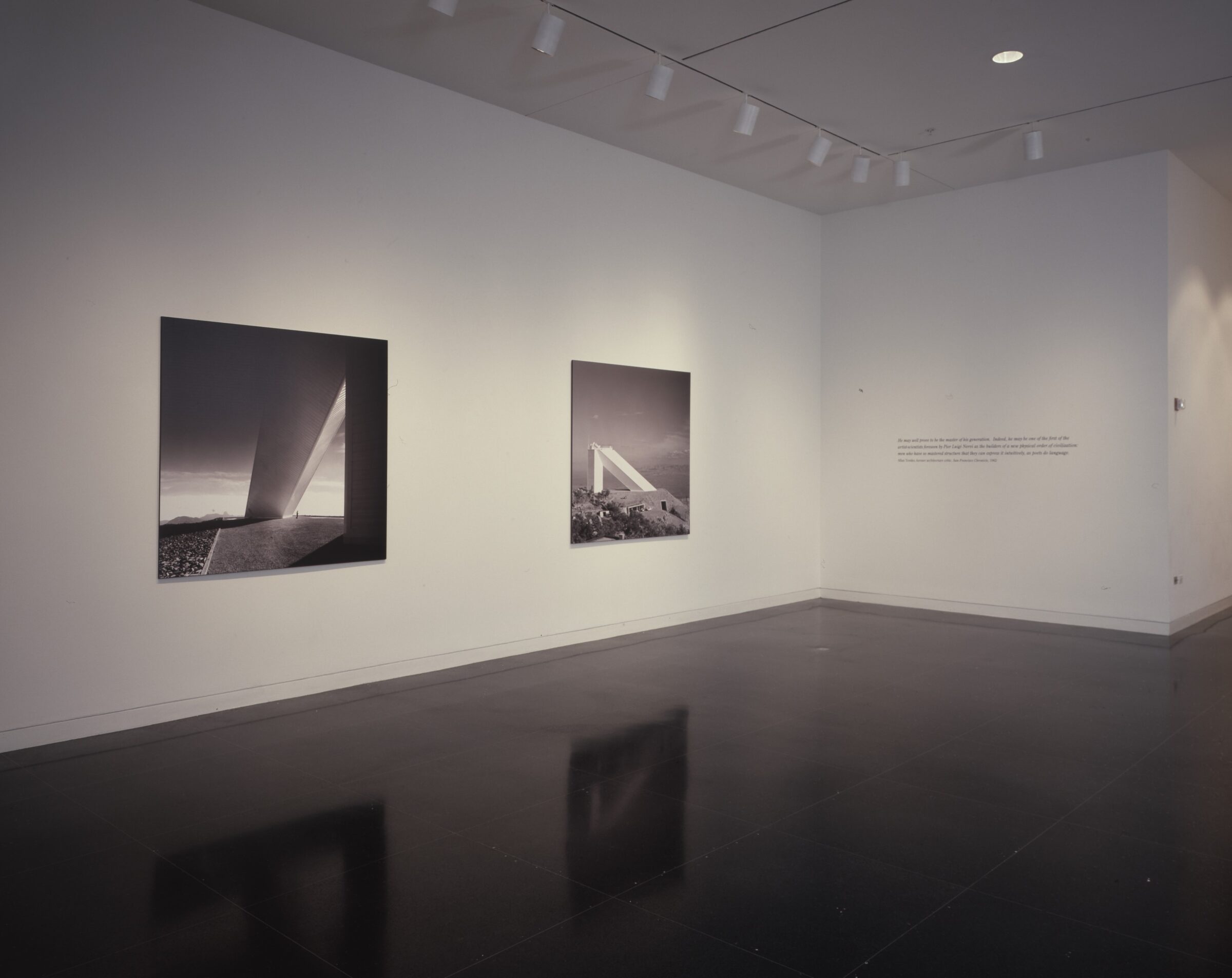Myron Goldsmith


Past exhibition
Myron Goldsmith
About the Exhibition
The Arts Club of Chicago is pleased to announce the exhibition of work by architect and structural engineer Myron Goldsmith (1918–1996). Born in Chicago, where he spent most of his professional life, Goldsmith is part of the city’s rich legacy of innovation and practicality in architecture. Combining optimism, a deep understanding of building technology, and a rigorous, inquisitive approach to seeking efficient and appropriate structural and architectural solutions, Goldsmith is regarded as one of Chicago’s 20th-century masters for his contributions to the field through his buildings, teaching, and writings. Allan Temko, Pulitzer Prize–winning architecture critic for the San Francisco Chronicle, wrote that “Myron may well prove to be the architect of the century.”
The exhibition highlights ten of Goldsmith’s architectural projects between 1955 and 1978: competition for the Garibaldi Bridge, Rome, Italy (1955); United Airlines maintenance hangar, CA (1958); United Airlines wash hangar, CA (1958); Robert R. McMath solar telescope at Kitt Peak National Observatory, AZ (1962); Brunswick Building, Chicago, IL (1966); Oakland Alameda County Coliseum, CA (1966); Arthur Keating Hall at Illinois Institute of Technology (IIT), Chicago, IL (1968); Chicago Transit Authority station, Chicago, IL (1970); The Republic newspaper plant, Columbus, IN (1971); and the competition for the Ruck-a-Chucky Bridge, Auburn, CA (1978). The exhibition also includes a model of the Ruck-a-Chucky Bridge and 44 photographs of masters thesis projects by Goldsmith’s students at IIT, including Phyllis Lambert, co-founder and former director of the Canadian Centre for Architecture in Montréal, and architect David Sharpe.
About the Artist
Myron Goldsmith attended Armour Institute of Technology (today IIT) and received his Bachelor of Science degree in architecture in 1939. During his final year as a student he worked with Mies van der Rohe, who had arrived in 1938 to serve as director of the school. Goldsmith was licensed as an architect in 1941 and as a structural engineer in 1943, and one of his first jobs after graduation was with the US Army Corps of Engineers (1944–46). In 1946 he joined the architectural office of Mies van der Rohe in Chicago, where he worked for seven years, during which time he also completed a Master of Science in architecture at IIT. He worked with Mies on several projects, most significantly the apartment blocks at 860-880 Lake Shore Drive (1951) and the Farnsworth House (1946–50).
In 1953 Goldsmith spent two years at the University of Rome, Italy, on a Fulbright Fellowship working with engineer Pier Luigi Nervi. Upon returning to the United States he joined the firm of Skidmore, Owings & Merrill and worked in the San Francisco office as chief structural engineer for three years. He relocated to the Chicago office in 1958 as associate partner and senior architectural designer, and became a general partner of the firm in 1967. Goldsmith was a professor of architecture in IIT’s graduate program of architecture for almost 30 years (1961–90). His work there with students, especially developing and testing theories, led to new structural ideas, such as long-span structures using two- and three-way grids and cable-supported spans (Peter Pran and Lawrence Kenny) and for high towers using the framed tube, the diagonal-braced tube in both steel and concrete, the belt-truss, and the super frame (Miko Sasaki and Kay Vierk). These theories were later incorporated into real applications used in private practices, such as the John Hancock building in Chicago and the 780 Third Avenue building in New York.

